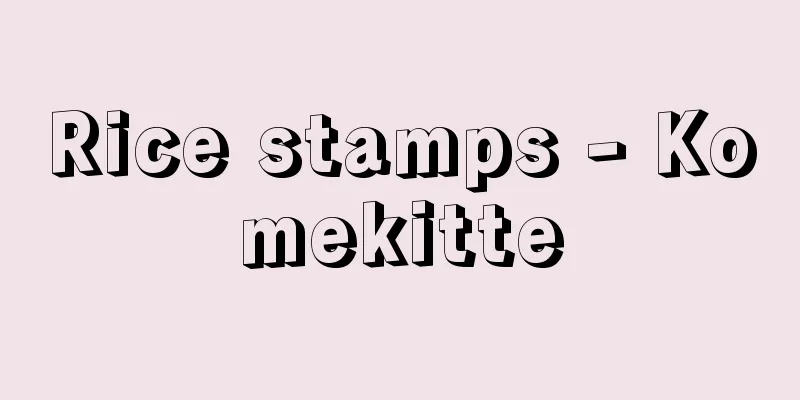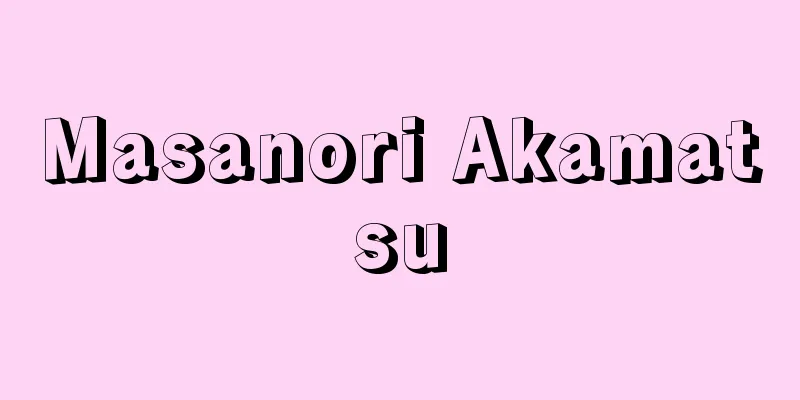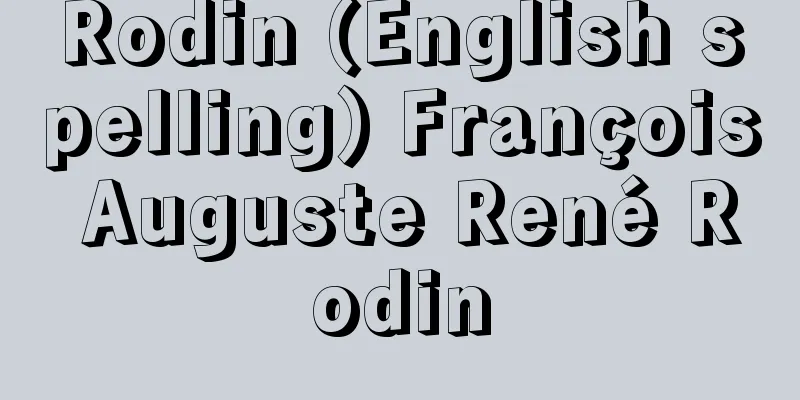Rice stamps - Komekitte

|
During the Edo period, they were issued for rice sold by the storehouses of various feudal domains, and were originally a type of warehouse receipt. Usually, four pieces of Senkashi paper were used, and the number of bales, storehouse name, stamp number, buyer name, and purchase date were written on the stamp. One stamp represented 10 koku of rice. Usually, the deadline for release from the storehouse was written, and it was stated that any losses during storage were the responsibility of the stamp bearer, but this became decorative in the late Edo period. Rice stamps can be divided into "successful bid stamps," which state the successful bidder and date of the bid, and "bozu stamps," which do not. In terms of the reason for issuance, there are "issuing stamps," which were issued upon successful bid, and "advance payment stamps," which were issued as collateral for a debt. Usually, winning bids were issued in the form of postage stamps, and advance payment stamps were issued in the form of bozu stamps, but in the late Edo period, when the financial difficulties of the feudal domains became serious, a large number of advance payment stamps of the postage stamp type were issued. However, since advance payment stamps were originally stamps that were not backed by actual rice, when actual rice was demanded as a result of these stamps, the storehouses fell into a difficult situation. In such cases, these rice stamps were called kuumai (empty rice) stamps or kamai (excess rice) stamps. [Miyamoto Mataro] Source: Shogakukan Encyclopedia Nipponica About Encyclopedia Nipponica Information | Legend |
|
江戸時代、諸藩蔵屋敷が販売した米に対して発行したもので、本来、倉荷(くらに)証券的なもの。普通、仙花紙(せんかし)四つ切りを用い、俵数、蔵屋敷名、切手番号、買い手氏名、買い手期日が記載された。1枚で10石の米高を表す。通常、蔵出期限が記載され、保管中の損耗は切手所持者の負担であると明記されているが、これは江戸後期には装飾文言化した。米切手は形態別には、落札者・落札日の記載のある「落札切手」と、それらがない「坊主(ぼうず)切手」に分かれる。また発行の契機別にいうと、落札によって発行された「出(で)切手」と、借金の担保として発行された「先納(せんのう)切手」とがある。普通、落札切手は出切手の形態で、また先納切手は坊主切手の形態であったが、諸藩の財政難が深刻化した江戸後期には出切手タイプの先納切手が多量に発行された。しかし、先納切手はもともと現米の裏づけのない切手であったから、これにより現米が請求された場合、蔵屋敷は苦境に陥った。この場合この米切手は空米(くうまい)切手とか過米(かまい)切手とよばれた。 [宮本又郎] 出典 小学館 日本大百科全書(ニッポニカ)日本大百科全書(ニッポニカ)について 情報 | 凡例 |
Recommend
Yang Wei-zhen (English name)
[Born] Motosada 2 (1296) [Died] Hongwu 3 (1370) A ...
Sandstone
It is a type of sedimentary rock, a type of clast...
Mikha'el; Michael
One of the archangels in Judaism and Christianity....
Masao Ohya
1863-1928 A freedom and civil rights activist fro...
Fisheries science - Suisanguku (English spelling) fisheries science
It is an applied science that studies the theory ...
Kalecki (English spelling) Michał Kalecki
A world-renowned economist born in Poland. Born i...
Komae [city] - Komae
A city on the north bank of the Tama River in sout...
Goto Daiki
A record of what Mosui saw and heard from 1680 (En...
Matisse
French painter. Born in Le Cateau-Cambrésis in nor...
Kleomenes I
King of Sparta (Agid family). Date of birth and de...
Motor nerve fibers
…Some of this information reaches consciousness, ...
Work orders - work orders
A general term for orders issued by superiors to ...
Oil paints
〘 noun 〙 Paint used for painting oil paintings ③. ...
Kake [town] - Kake
A former town in Yamagata County, western Hiroshim...
Danrin Toppyakuin
A collection of renga (linked verse) haikai poems....


![Ikazaki [town] - Ikazaki](/upload/images/67cae574d49de.webp)






